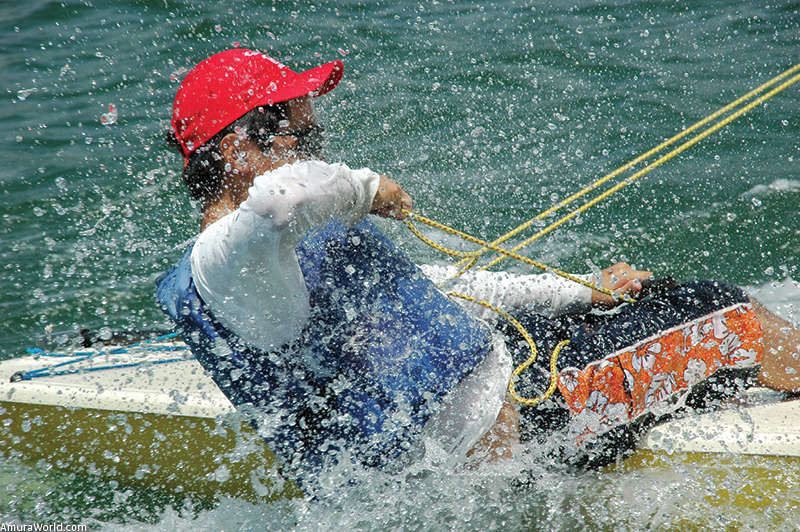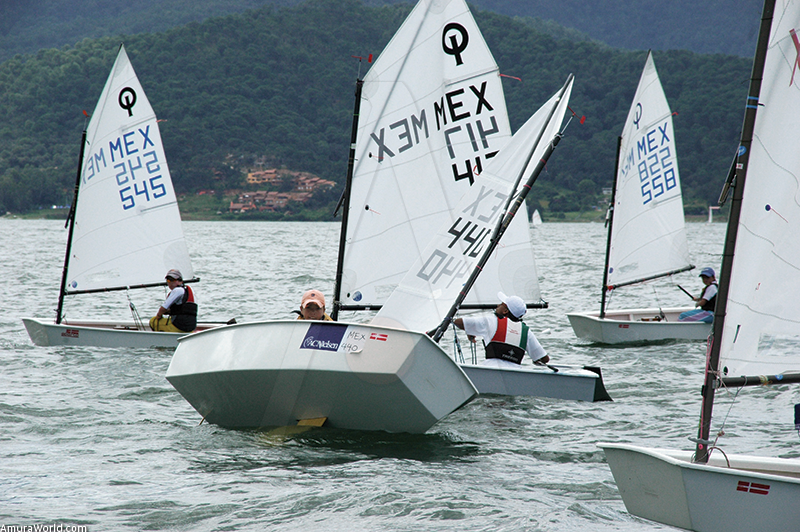Valle de Bravo is not only a picturesque town, nowadays it is also an attractive tourist attraction for people who love freedom, nature and the wind. It is also popular because of the many aerial sports that are available. Aside from those that can be found in almost all tourist destinations, it has excellent places for practicing the aerial kind. In effect, a dam is a peaceful spot to practice sports that are suitable for lakes.
Valle de Bravo welcomes visitors to its calm and peaceful waters, which remain so until 11:30 in the morning, making it an excellent destination for water skiing. After midday, the weather conditions (temperature, water activity and winds of 10-12 knots) make sailing the perfect activity on this dam that was filled in the 1940s.
Some experts say that Valle de Bravo grew because of sailing. That, together with the warm air that blows in from the coast of Michoacán (Lázaro Cárdenas), results in excellent gusts of wind. Commodore Jorge Murrieta W., of Club Náutico Avándaro agrees. In his opinion, Valle de Bravo became popular thanks to sailing since, in the 70s and 80s, there were no motorboats on the lake, only sailboats, because of the good winds.
Today, sailing is Valle’s top activity. Throughout the year the best marinas and sailing clubs organize great regattas that have become a tradition and that turn the lake’s surface into a true spectacle.
One of the seedbeds of Mexican sailing is Club Náutico Avándaro, which was founded in 1956. Worldclass athletes like Eric Mergenthaler and Tania Elías Calles started there.
Championship-worthy
The municipality of Valle de Bravo, designated by Unesco as a World Heritage Site, became popular for sailing because of its weather conditions. Thus, it turned into the host of important and prestigious regattas. Murrieta W. proudly states that the Mexican Sailing Federation has five high performance sailors, four of whom are from Valle de Bravo: Tania Elías Calles (Láser Radial class), Armando and Pamela Noriega, and Jorge Xavier Murrieta (Hobie Cat 16 class), in addition to David Mier y Terán (Board sail class) who is from Progreso, Yucatán.
On top of that, the 1975 Panamerican Games were held there, as were two Central American Games (1990 and 2002) and a great number of national and Northamerican championships. Even though there is good sponsorship, “the more the better” assures Murreita W., who points out that it is the different classes who organize the regattas on the lake and find their own sponsors.
Regattas and Sponsorships
The best seasons for regattas are from February to June and from September to December, when competitions are held every 15 days. The most popular classes are J-24, Optimist, Flying Tern, Hobie Cat and Santana 20.
All types of sailboats up to 24 or 25 feet can be used. After that, the lake gets a bit too small for bigger craft, observes Murrieta. In his opinion, the two most popular sailboats on the lake are the J-24 and the Santana 20, both of which have a fixed keel, are very stable, and require a crew. The Optimist is the national class for kids and the best of Mexico are from Valle de Bravo.
“Valle started with the Flying Tern and this class is still very popular; the Hobie Cat 16, which are very fast catamarans, are the latest thing.”
Learning to sail is extremely easy and fun, concludes Murrieta: “One of the objectives of Club Náutico Avándaro, Valle’s oldest and the club most dedicated to this sport, is teaching how to sail.”
Text: Fabiola Galván Campos / Germán Nájera ± Photo: Origen del Arte, www.todovalle.com




